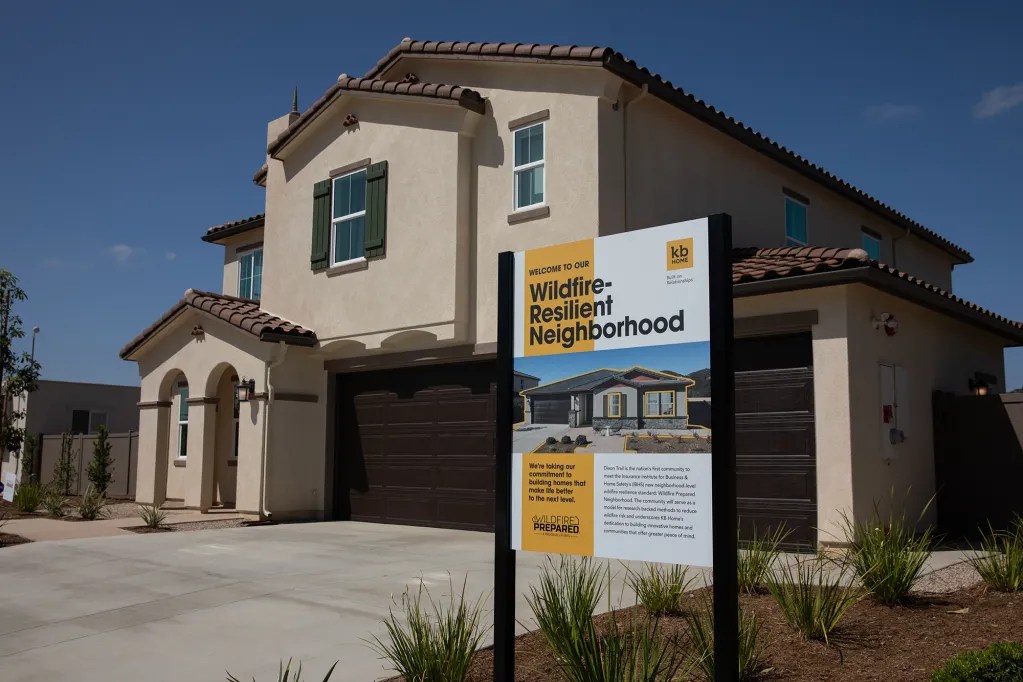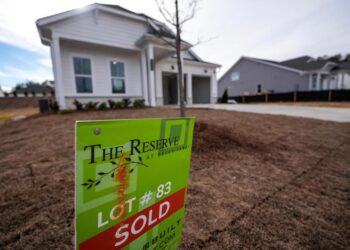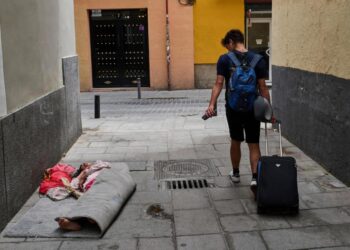The homes in the half-built subdivision look a lot like all the others nestled up against the parched, shrubby hills of Escondido in north San Diego County.
But look a little closer. The gutters and vents are enclosed in a thin, wire mesh. Each window is double-paned, the glass tempered to withstand the heat of a wildfire, the stucco around the shutters resistant to flame. The privacy fences, a suburban staple, look like wood, but are actually brown-tinted steel. Every foundation sits behind a moat of gravel.
Also see: What is ‘home hardening’? Fire-resistant walls, roofs, windows and landscaping
National mega-developer KB Home is marketing Dixon Trail as the first purpose-built “wildfire resilient neighborhood” in the United States. The next time fire rips through the chaparral in surrounding hills (a question of when, not if) this cluster of homes is being built to keep the flames at the subdivision’s edge.
Though only half of the 64 homes have been constructed, the development had its grand opening earlier this month. No one from KB would say as much, but in purely marketing terms, the timing couldn’t have been better. For years, wildfire-resilient home and neighborhood design has been a niche consideration for many California homeowners. January’s Los Angeles firestorms have made it feel more like an urgent necessity.
“Buyers want to feel safe in their homes and this is a really big plus for them,” said Steve Ruffner, who oversees KB projects across the region.
The design of each house and the layout of the entire subdivision — with healthy buffers between each building and scant flammable vegetation — meet standards set by the Insurance Institute for Business & Home Safety, a research nonprofit funded by the insurance industry. The institute began issuing its “wildfire prepared” designations to homes in 2022. Think organic certification on produce, except for homes built to withstand wildfire.
This is the first time the…
Read the full article here







